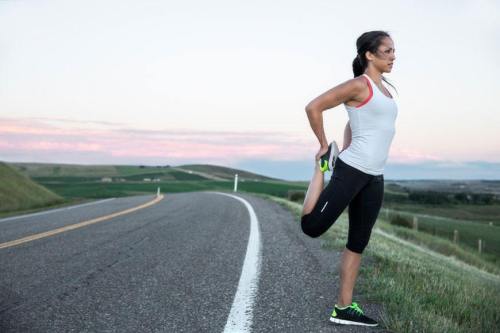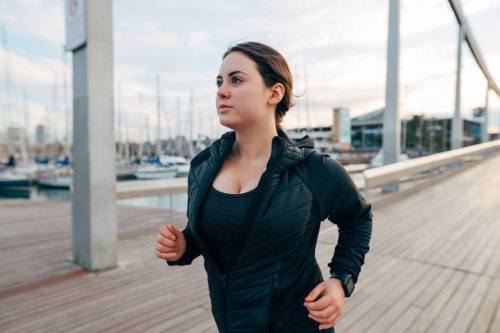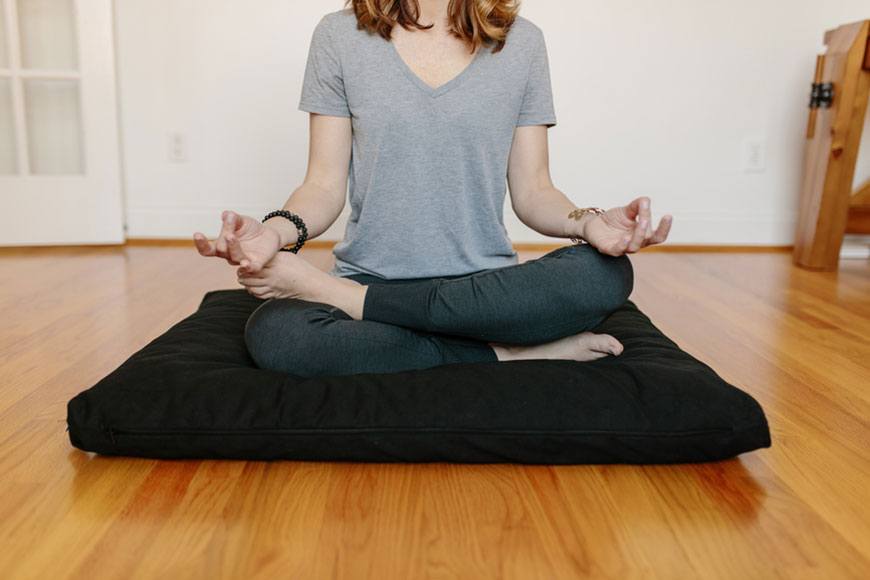Anxiety attacked my life—here’s how exercise helped me fight back
Here are three research-backed ways to reduce stress and anxiety through physical activities such as running, breathwork, and muscle relaxation techniques.

Peering over a copy of Us Weekly, I assessed the germs floating around the infirmary’s waiting room. There wasn’t a safe seat in the house. I was in the trajectory of patient zero’s phlegmy cough, and perilously positioned next to the human snot factory’s incessant sniffs and sneezes. If I wasn’t ill already, I would be by the time I left—I just knew it.
This particular visit was for a bump I found on the back of my neck. Convinced it was meningitis, I rushed to the doctor’s office only to learn it was my vertebrae, not a life-threatening illness. This was one in a series of panic-provoked, WebMD misdiagnoses.
Anxiety was an unwelcome tenant in my brain that, despite years of eviction notices, wouldn’t leave.
That’s because I suffered from anxiety. It was an unwelcome tenant in my brain that, despite years of eviction notices, wouldn’t leave. That’s also the case for millions of Americans. “About 20 percent of Americans meet the criteria for a generalized anxiety disorder (GAD) diagnosis,” says Kristin Taylor, PhD, a licensed clinical psychologist specializing in the treatment of anxiety disorders. This statistic does not represent other forms of anxiety disorder such as panic, OCD, social phobias, illness anxiety, and PTSD.
I realized that to manage my anxiety, I needed a set of tools. Anti-anxiety medication, while literally life-saving for some people, wasn’t where I wanted to begin. So I experimented with a three-pronged program for my body and mind. First, I practiced daily healthy habits like cardio, strength training, eating three meals a day, and getting eight hours of sleep each night. Secondly, I logged my progress. Lastly, I connected with a cognitive behavioral therapist who guided me through an extensive set of exercises to help with catastrophizing, positive self-talk, and exposure.
I realized that to manage my anxiety, I needed a set of tools.
This approach allowed me to start regaining ownership over my brain and body—and, in time, my workouts became my go-to guard against panic attacks. “Creating healthy habits is a great starting point for coping with GAD,” Dr. Taylor says. “Fitness doesn’t come with a lot of side effects or cost-related restrictions.” So why not try using your body to help your mind?
Here’s my fitness-driven, tension-taming trifecta—it might help you, too.
1. Take a breather
Worrying makes us woozy. Anxiety triggers shallow, rapid breathing, which causes hyperventilation and lightheadedness. “Exercises that have a breathing component like meditation are very helpful for anxiety reduction,” Dr. Taylor says.
Try this easy and effective breathing technique: Position your hands on your chest and stomach. Inhale deeply through the nose, filling your belly with fresh, soothing air. Hold for 1–2 counts, then exhale fully through the mouth. Expel negative thoughts out of your body with each exhale. Repeat 2–3 times each day.

2. Run wild
Running rescued me from anxiety. I’d always paid attention to my health, and logging miles affirmed that my body was healthy and strong. If I could endure strenuous exercise, I knew I was in good shape. Regular cardio exercise has similar effects on the brain as taking antidepressants. For best results, aim for 3–5 days of aerobics weekly. Have sore knees or another issue that makes running a bad fit? A scenic bike ride, hike, or long walk will work just as well.

3. Relax those muscles
I’m hyper-aware of the sensations my body experiences. Before I started my three-pronged approach, when something felt off, my mind would jump to the worst-case scenario. I’d get a harmless tension headache, for instance, and I’d be convinced that it was a brain tumor. Bizarre, I know.
So here’s how I learned to ease my mind by relaxing my muscles. Progressive muscle relaxation is a technique of systematically tensing and relaxing muscles, which research shows can help ease the physical symptoms of worry when practiced regularly.
Here’s how to do it: Get comfortable and slowly inhale and exhale, concentrating on the rhythm of your breaths. Begin from the top of your body and work your way down. Hold each muscle contraction for 10 seconds, focusing on the tension in each area your body, then slowly release. Elevate your eyebrows. Clamp your jaw. Squeeze your shoulders up to your ears. Tighten your stomach muscles. Clench your glutes. Curl your toes.
Since I started using these three tools, my life has improved considerably. I have more energy, I experience fewer anxiety attacks, and (this is big!) I’ve removed WebMD as my iPhone browser’s homepage. While I know that anxiety can always return, this stress-reducing system has transformed me from a worrier into a warrior.
Here’s how to network if you have anxiety (yes, it can be done). Plus, more about those calming weighted blankets people are talking about.
Sign Up for Our Daily Newsletter
Get all the latest in wellness, trends, food, fitness, beauty, and more delivered right to your inbox.
Got it, you've been added to our email list.











